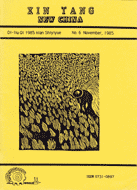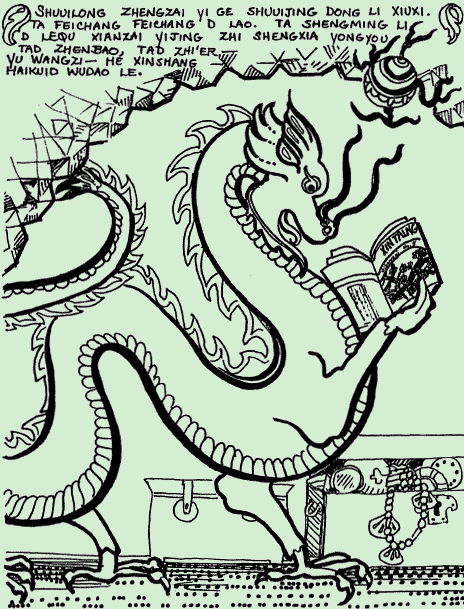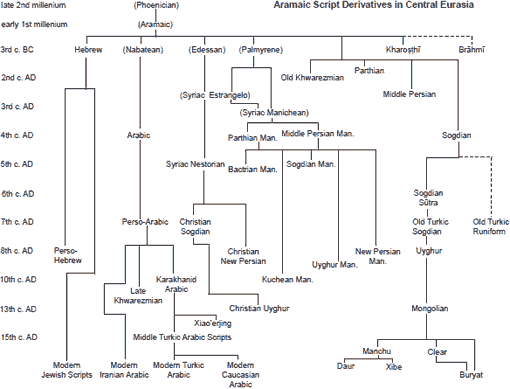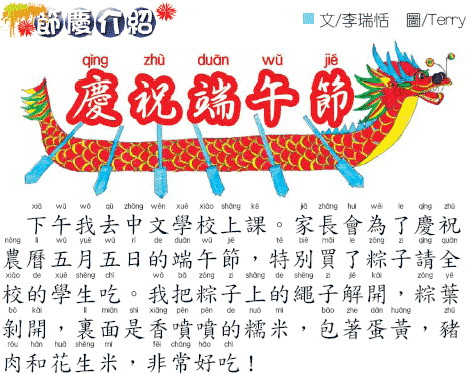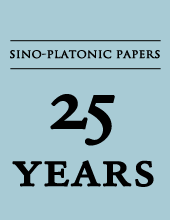 These days, with the click of a mouse one can publish something that can instantly be seen by people around the world. But despite this ease it can still feel like a major accomplishment if someone has the tenacity to keep even a blog going past its first few years.
These days, with the click of a mouse one can publish something that can instantly be seen by people around the world. But despite this ease it can still feel like a major accomplishment if someone has the tenacity to keep even a blog going past its first few years.
Consider, then, the days long before user-friendly blogging software, the days before blogs even. The days before desktop publishing was in the hands of more than a few, before most people had the ability to send or receive files electronically, before most people had even heard of the Internet. The days when typewriters were still common.
So these were also the days so long before Unicode that including Chinese characters or even common diacritics in a manuscript usually meant writing them in by hand.
The days when small-scale publishing meant trips to the copy shop and long sessions spent photocopying and stapling. When the international correspondence needed to issue a small journal meant trip after trip to the post office, paying postage to send something to what might well be the other side of the globe, and having to wait weeks, months, for a reply.
The days when receiving payment for issues meant paper checks sent through the regular mail and then taken during certain hours to the bank, where you would wait in line for a teller. And heaven help you with the endless paperwork and waiting if the check was not in U.S. dollars but a foreign currency.
The days when long-distance phone calls really cost something. And international calls? Ouch!
And all that’s on top of all of the other many challenges involved in running a peer-reviewed academic journal.
Those are just some of the situations Victor Mair had to deal with when his journal, Sino-Platonic Papers, was getting off the ground. And there have certainly been many challenges since.
So I think it’s worth noting that Sino-Platonic Papers has reached the age of twenty-five and is still going strong.
There are now more than two hundred issues, the majority of which are available in full for free on Sino-Platonic Papers’ Web site. The shortest issue is just four pages, while the longest to date stretches over three volumes and comprises approximately one thousand pages.
That this journal has published all manner of authors, from internationally renowned scholars to unaffiliated researchers out in the boondocks, helps demonstrate its willingness to take risks. (But, as Cameron Crowe reminds us, that’s how you become great.)
Sino-Platonic Papers has just released its thirteenth volume of book reviews (many of which are particular favorites of mine). But what is especially notable is that it marks the twenty-fifth anniversary of the beginning of this wide-ranging journal.
I congratulate SPP‘s editor, Victor Mair, on this milestone.
Here’s what the anniversary issue covers.
- Preface
- Ancient China and Its Enemies: The Rise of Nomadic Power in East Asian History by Nicola Di Cosmo
- The Prehistory of the Silk Road by E. E. Kuzmina, ed. Victor H. Mair
- Mozi: A Complete Translation by Ian Johnston
- Envisioning Eternal Empire: Chinese Political Thought of the Warring States Era by Yuri Pines
- The Politics of Mourning in Early China by Miranda Brown
- The Revelation of the Magi: The Lost Tale of the Wise Men’s Journey to Bethlehem by Brent Landau
- A Story Waiting to Pierce You: Mongolia, Tibet and the Destiny of the Western World by Peter Kingsley
- Rome and China: Comparative Perspectives on Ancient World Empires, ed. Walter Scheidel
- The Camel’s Load in Life and Death: Iconography and Ideology of Chinese Pottery Figurines from Han to Tang and Their Relevance to Trade along the Silk Routes by Elfriede Regina Knauer
- Ethnic Identity in Tang China by Marc Abramson
- Mélange tantriques à la mémoire de Hélène Brunner/Tantric Studies in Memory of Hélène Brunner, ed. Dominic Goodall and André Padoux
- Imperial China, 900-1800 by F. W. Mote
- Local Religion in North China in the Twentieth Century: The Structure and Organization of Community Rituals and Beliefs by Daniel L. Overmyer
- Tibetan Market Participation in China by Wang Shiyong
- Chinese as It Is: A 3D Sound Atlas with First 1000 Characters by Conal Boyce
- Language Choice and Identity Politics in Taiwan by Jennifer M. Wei
- ABC English-Chinese, Chinese-English Dictionary, ed. John DeFrancis and Zhang Yanyin
- Learning Chinese, Turning Chinese: Challenges to Becoming Sinophone in a Globalized World, by Edward McDonald
Disclaimer: I volunteer as SPP’s technical editor and maintain its Web site. But I certainly didn’t have any such position twenty-five years ago!

